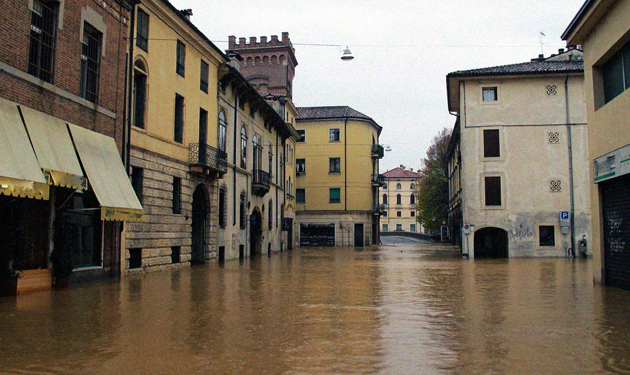As we saw with Thailand’s monsoon-season deluge and the destructive waters sent ashore by Hurricane Sandy, floods are one of the most catastrophic natural disasters. But by analyzing the science behind the devastation, insurers are learning to more accuractly underwrite what has become an increasingly costly peril.
“We have to understand how probable they are and how large they might be in order to price the risk properly,” said Trevor Maynard, head of exposure management and reinsurance at Lloyd’s of London.
One way that his company is trying to analyze catastrophes is through its Science of Risk Prize, which it awards each year to recognize noteworthy research that advances risk management. The work that won the 2012 prize in the natural hazards category represents one way insurers are finding innovative methods to better understand flood risk.
The first-prize paper, authored by Paul Bates, director of the Cabot Institute at the University of Bristol and senior academic with the Willis Research Network, illustrated how researchers have developed models that can predict flood hazard down to the individual property level in urban areas.
Historically, that has been one of the key problems in trying to underwrite the risk; flood maps are often outdated and lack the nuance that an insurer needs to make sure it is not over-exposed in one location. “There’s some fundamental science that needed to be done,” said Bates. “It’s a counter-intuitive solution, as well. You make the model quicker by making it more complex.”
When even next-door neighbors can experience different flood levels, Bates’ work begins to add the level of detail needed by insurers for risk assessments, according to Tim Fewtrell, chief hydrologist at Willis Global Analytics. “For most flood insurance industry catastrophe flood risk models,” said Fewtell, “this is one of largest computational costs to the whole process.”
The model has several advantages that make it appealing to insurers. For one, it has already been rigorously tested in the academic field. The researchers also released into the public domain a complete blueprint of how to replicate their algorithm, which makes it easily adoptable. By changing just a few lines of code in existing models, others in the insurance industry can implement the model in as little as an afternoon. “It’s already being used by a number of modeling agencies,” said Maynard.
With the blueprint, Willis has begun rolling out its new flood risk models in Europe and Southeast Asia. Not only are the risk assessments determined by cutting-edge simulations that better inform pricing, they are also completed with more computational efficiency and in a timely manner. “What we’re managing to do is cultivate this network of people all working together on the same sort of problems,” said Fewtrell.

